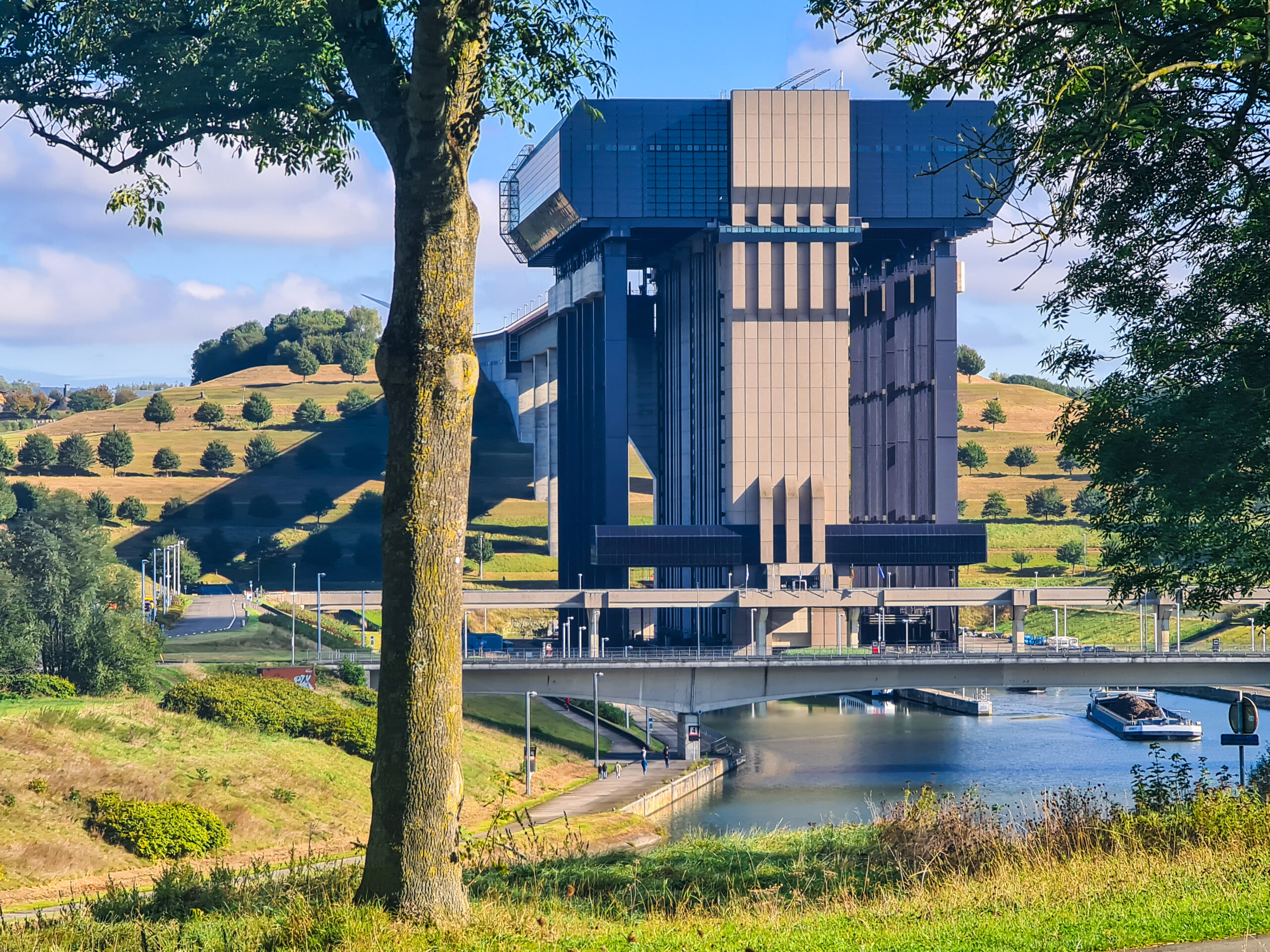Somewhere in Belgium, there is a piece of engineering so gargantuan, so mind-bogglingly over-the-top, that it makes the Atomium look like a child’s sandcastle. Deep in the Hainaut countryside, at a place called Strépy-Thieu, there is a 117-metre-tall mechanical marvel designed to do what nature cannot: move boats up a hill.
If you’ve never heard of the Strépy-Thieu boat lift, you’re not alone. Few Instagram influencers pose next to it, or tourists holding up queues to get the perfect selfie. But this behemoth, which looks like something straight out of a 1970s sci-fi movie somehow dropped into a bucolic Belgian valley, shifts, was the tallest boat lift in the world when it was completed in 2002.
Why was it built? Well, once upon a time, Belgium had a network of canals that allowed boats to transport coal, steel and beer – arguably the three things you really need to run a country. But there was a problem, particularly with the Canal du Centre, in the south: the land was inconveniently lumpy, and the old boat lifts – charming, Victorian contraptions (more of that later) – could only hoist small barges.
This was fine in the 19th century when people thought the height of ambition was a bushy moustache and not dying of tuberculosis. But in the modern world, where cargo ships are the size of small towns, a solution was needed.
And that solution was to spend 20 years and €160 million constructing a single, ludicrous lift that could hoist boats with the grace of a ballerina and the power of a space rocket.
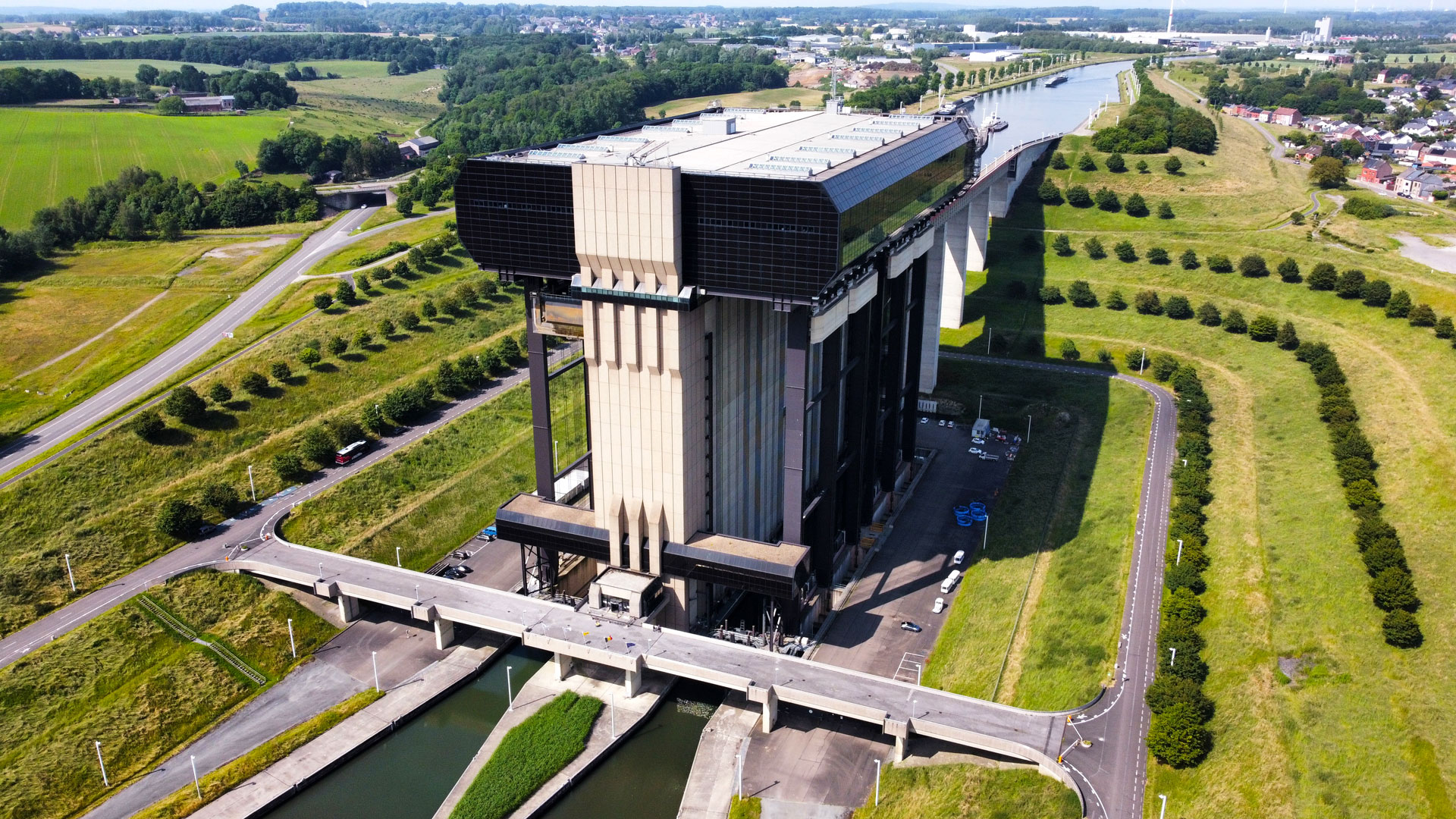
Strépy-Thieu boat lift. Credit: N. Matloka
The Strépy-Thieu boat lift is an unapologetic demonstration of human ingenuity over nature’s limitations. It hoists vessels in two counterbalanced caissons, each the volume of an Olympic swimming pool, a vertical distance of 73.15m (only the Three Gorges Dam’s lift in China, which opened in 2016, is bigger).
The lift consists of two gigantic caissons – essentially enormous bathtubs – that weigh 2,000 tonnes when empty and 8,000 tonnes with water, and they move up and down using the principles of counterbalancing.
If you’re imagining a roller coaster ride, slow down. The ascent takes a dignified seven minutes, a process as smooth as a well-poured beer. Strépy-Thieu operates with striking efficiency, a remarkable blend of gravity and hydraulics.
It’s all terribly clever, with high-tech machinery and enough concrete to terraform the Moon. But the main takeaway is this: boats sail in, a lot of buttons are pressed, the whole thing moves, and then – somewhat miraculously – boats sail out at a different altitude.
It’s the marine equivalent of getting in a lift on the ground floor and pressing 10 – except, of course, your lift weighs as much as the Eiffel Tower and could crush Luxembourg if it fell over.
At full capacity, this industrial leviathan can lift 1,350 tonnes of ship and cargo, making it the linchpin of Belgium’s inland waterway network. It connects the Meuse and Scheldt river basins, allowing large barges to bypass the problematic elevation changes of the landscape. In other words, it keeps Belgium’s economy, quite literally, afloat.
Giant whirling cogs
There’s no denying that the Strépy-Thieu Boat Lift is an extraordinary achievement. It’s like Belgium looked at the world’s engineering marvels – things like the Hoover Dam and the International Space Station – and thought, “What if we applied this level of ingenuity to something truly niche?”
Visiting the boat lift is a fascinating experience. You can stand there, cappuccino in hand, and witness an enormous floating slab of water defy gravity. There’s even a visitor centre on the top floor with exhibitions explaining why this all makes sense.
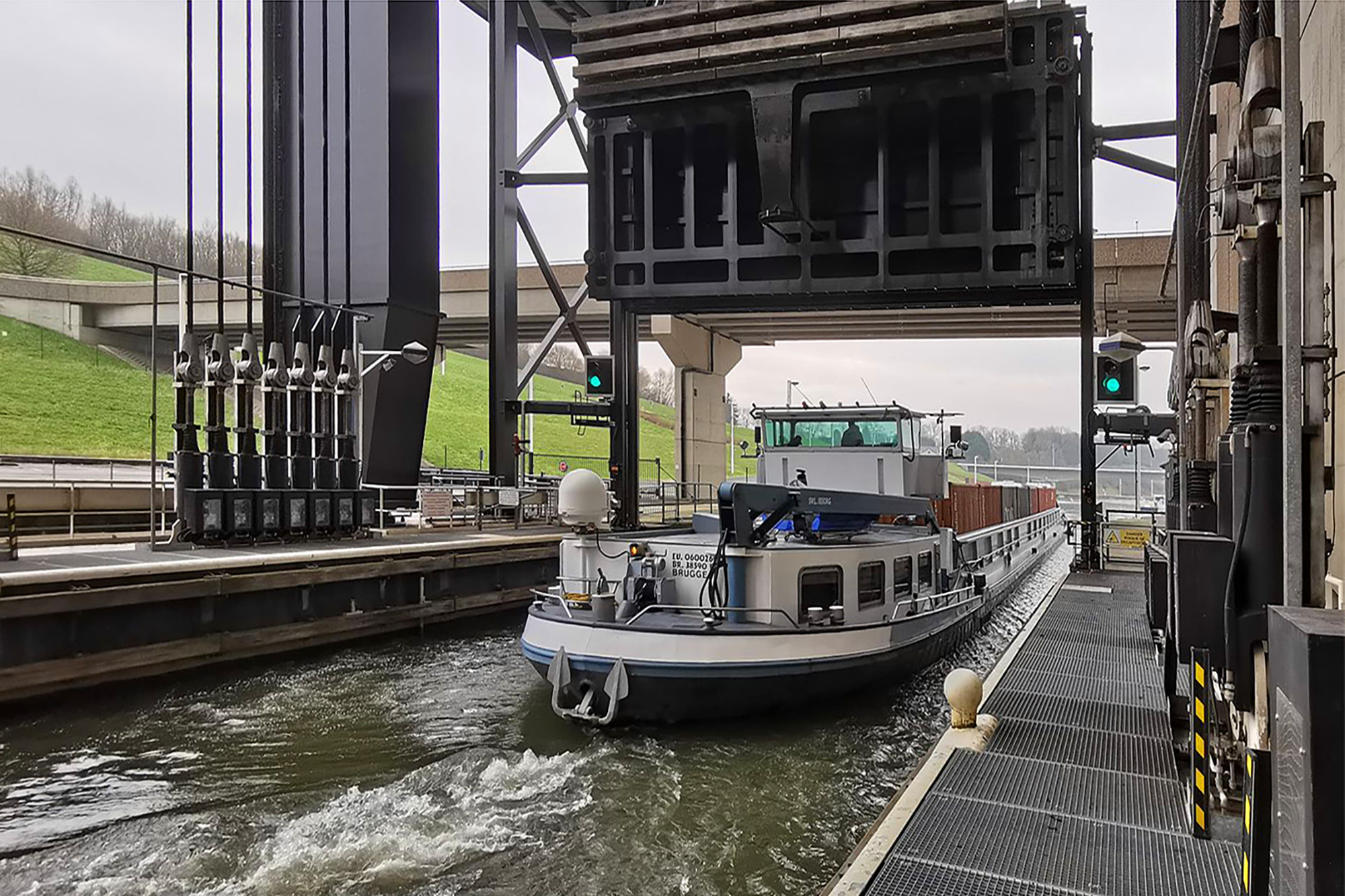
Boat in the caisson of the Strépy-Thieu boat lift. Credit: N. Elias
I’m shown around by Nicolas Matloka, who runs communications for Hainaut’s waterways, and whose father-in-law is the seventh generation of boatmen.
He takes me to the top floor, where the exhibition about canals in Belgium mentions that in the early days, horses, women and children would drag the barges from the tow line. Coal mining and steel production eventually drove the early industrialists to concoct canals to ferry their produce to other markets.
It’s fairly quiet at the boat lift when I visit. Traffic has slowed down because of a bridge collapse further down the canal, blocking the waterway, which has added up to 290km or 32 hours of travel for some journeys.
But over a typical year, it carries out around 5,000 lifts, averaging out at around 12 a day. A graphic in the visitor centre says the canals annually cut fuel by 63 percent (219 million litres of petrol) and emissions by 62 percent (560 million tonnes of carbon dioxide).
Matloka takes me onto the machine floor, where the giant motors – painted bright blue and yellow – hum with a dull whirl. A space the size of a football pitch, each of its many wheels and cogs weigh more than a truck.
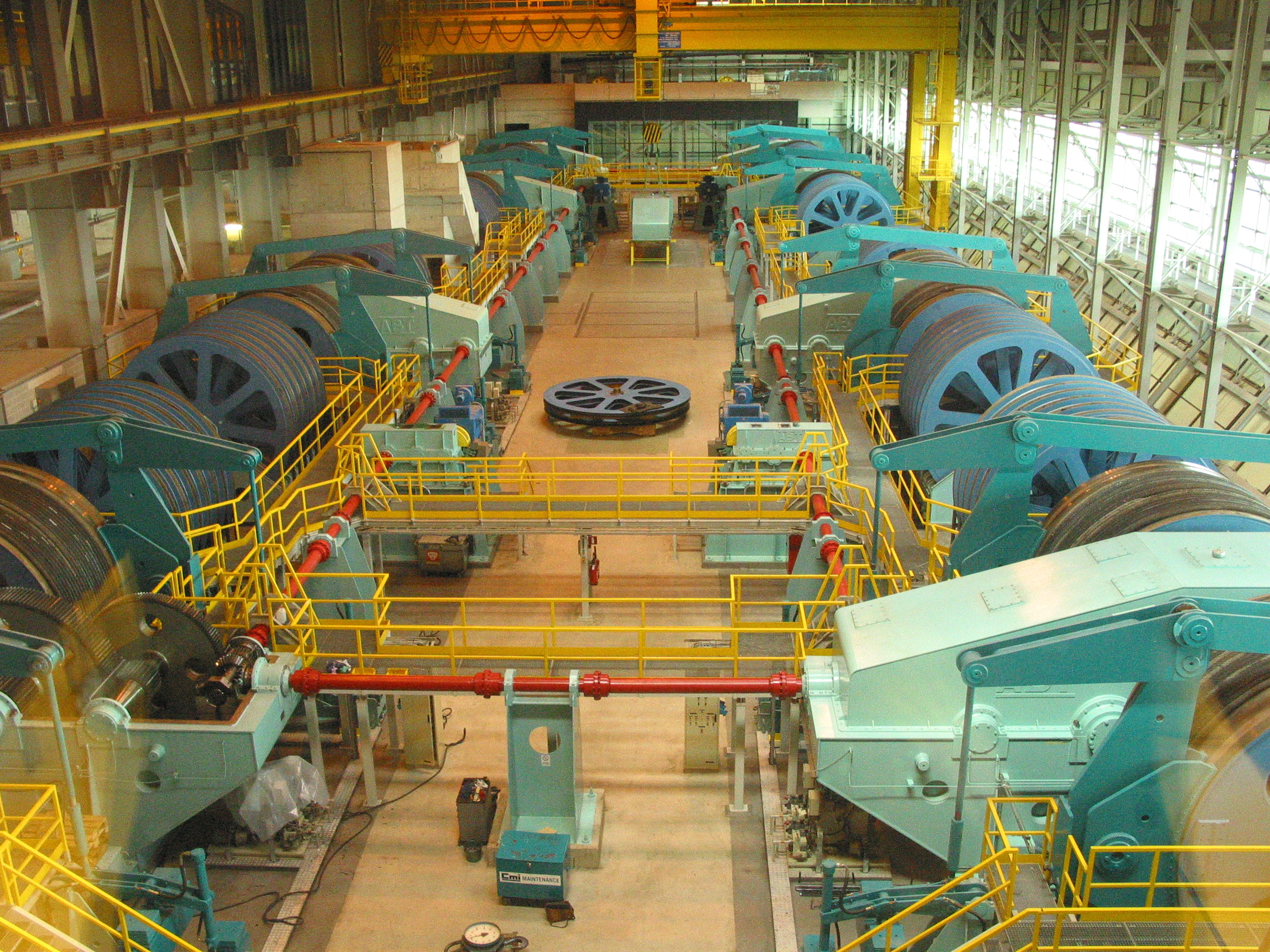
Machine room of Strépy-Thieu boat lift
Next to the machine floor is a massive room where the counterweights move up and down. It is available for rental, if a spooky, church-like space with a 70m ceiling is your thing (but not for raves – the reverberating echoes would try even the most determined clubber).
Matloka is fiercely proud of the strip of the Canal du Centre. “There is nothing like this in the world,” he says, adding that the four old boat lifts are still part of the canal system.
Miracle lifts
It’s at this point that it’s worth looking panning out to see more of the Canal du Centre, a narrow ribbon of water slicing through the undulating landscape, which set the tone for the waterway mechanics.
Belgium’s industrial pioneers began carving canals out two centuries ago, starting with the 48km Brussels-Charleroi Canal that linked the capital to the Sambre river, which then connects to the Meuse (Maas). From Seneffe, two-thirds of the way down the canal, they dug another waterway westwards towards Mons, the 24km Canal du Centre, where they created the Grand Large lake. They then carried on westwards towards the Scheldt (Escaut) with the 39km Nimy-Blaton-Péronnes Canal.
The system is full of locks to overcome the topographical changes. For example, the Blaton-Ath Canal, which goes northwards from the midpoint of the Nimy-Blaton-Péronnes Canal, has 21 locks over its 23km course.
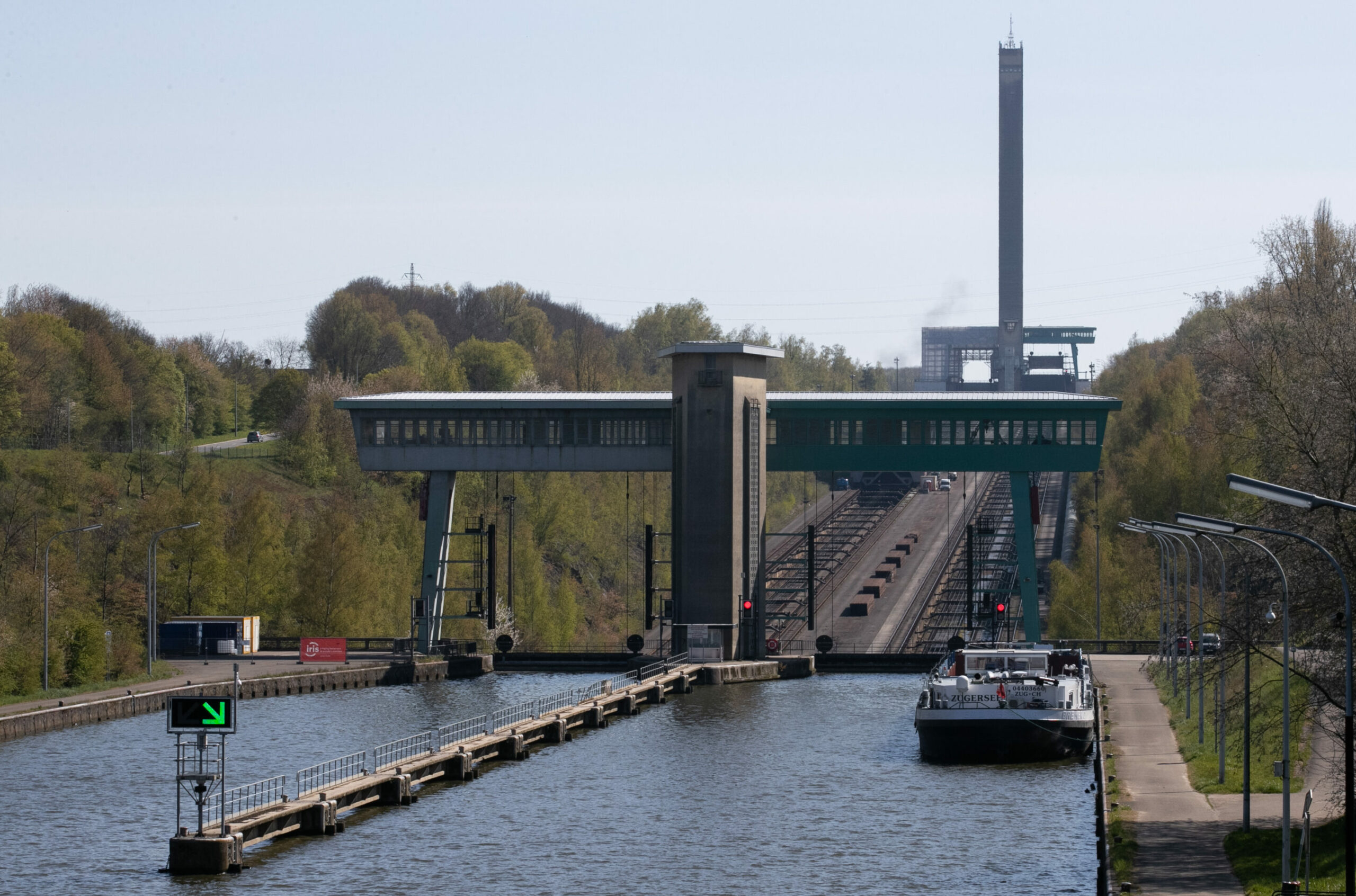
The Ronquieres Inclined Plane on the Brussels-Charleroi Canal, Monday 26 April 2021. Credit: Belga
But by the end of the 19th century, the Belgians, who had already boasted some of Europe’s most innovative industrialists, thought bigger. Along the Canal du Centre, they threw in those four hydraulic lifts – not locks – to carry shipping along the waterways.
The first one was completed in 1888 and the final one in 1917. They were once cutting-edge technology. Designed by British engineer Edwin Clark, they pioneered the simple yet effective hydraulic balance system, meaning they operate without a single electric motor – just good old-fashioned physics and some very determined gravity allowing for a smooth and energy-efficient lift of between 15 and 17m.
Now, while these historic lifts may lack the brute force and industrial intimidation of Strépy-Thieu, they have a level of elegance and charm that their enormous sibling lacks. Where Strépy-Thieu is a terrifying brute force monster, the older lifts are refined gentlemen. It’s like comparing a nuclear power station to an antique windmill.
And here’s the best part: they’re still in working order. Now UNESCO World Heritage Sites, they are the only surviving examples of their kind still operating in their original condition, a living museum of hydraulic ingenuity. Unlike their modern counterpart, they operate in near silence, gliding their vessels up and down with the efficiency of a butler serving afternoon tea.
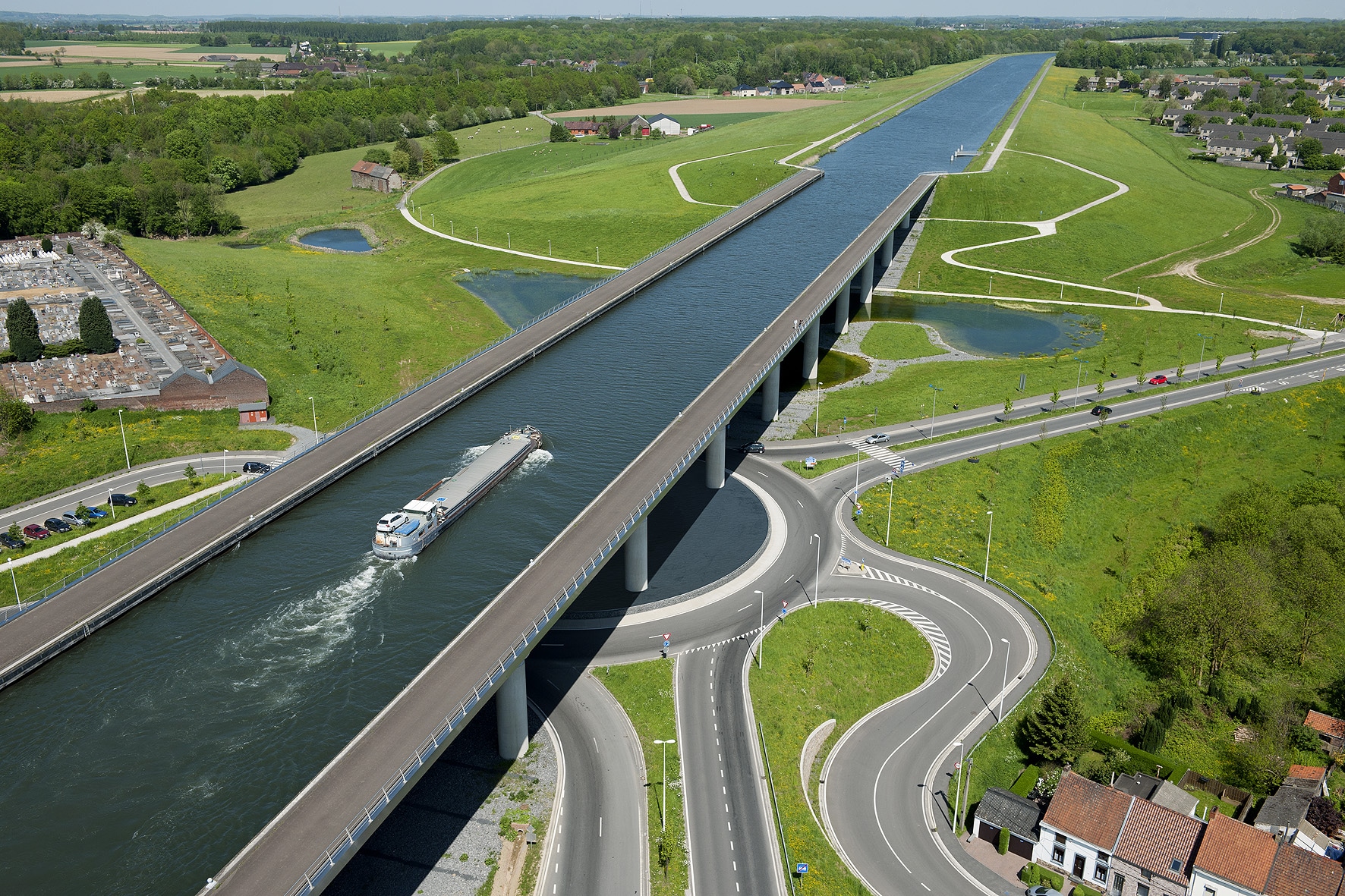
The Sart Canal Bridge
Though their lifting capacity is dwarfed by their modern successors, these historical lifts remain an awe-inspiring sight. Their brick-and-iron structures, with an almost steampunk aesthetic, serve as a poignant reminder of an era when industrial progress was synonymous with grand, elegant design. Today, they operate for tourist boats, offering visitors a chance to step back in time and experience a slice of Belgian engineering history.
Officially, they are still part of the Canal du Centre. When Strépy-Thieu was built, it came with a whole new stretch of canal, some 10km of wider waterway that diverged from the old route before La Louvière and then returning back to it. The result is that there are now two canal routes forking around La Louvière – although the old one is mainly for tourists.
There is also some cheeky engineering, as the new canal includes the 500m Sart Canal Bridge over the roads below. Drivers glancing up can see barges gliding 20m above them. Known locally as the Canal in the Sky, it looks like the builders were just showing off.
The canal baggage carousel
A few decades before Strépy-Thieu, the Belgians built a canal lift nearby that also defies physics.
If Strépy-Thieu is a brute force approach to elevation gain, Ronquières is its more elegant cousin. Located some 30km to the east on the Brussels-Charleroi canal, this inclined plane lift stretches for 1,432m and rises 68m, making it look less like a boat lift and more like an absurdly long airport baggage carousel.
But don’t be fooled by its gentle gradient: this is another of Belgium’s engineering marvels. Built in 1968, the Ronquières lift operates on an entirely different principle than Strépy-Thieu. Instead of lifting boats up a vertical shaft, it transports them slightly diagonally up a slope in vast water-filled troughs running on rails.
Stépy-Thieu in numbers
• Height: 117m
• Area: 135m by 75m
• Lift elevation: 73m
• Caisson: 112m x 12m, with 3.75m depth
• Traffic: Over two million tonnes of goods carried each year, the equivalent of just over 130,000 trucks
• Caisson connecting cables: 144, for a total length of 38km. At 30kg perm, that weighs a total 1,100 tonnes
• Electrical cables: 700km
• Oil used annually for hydraulic circuits and motors: 2,000 litres
• Oil used annually for metal cables: 600 litres
• Fire detectors: 800
Think of it as a railway for boats, except each of the two moving caissons weighs around 5,200 tonnes when full. Using counterweights and cables, the entire journey takes just 22 minutes – a significant improvement on the old system of locks, which could take a full day.
Like Strépy-Thieu, Ronquières was born out of necessity. Before its construction, boats had to navigate a tedious 14-lock system to conquer the difference in elevation. The lift not only cut travel time dramatically but also allowed larger vessels to traverse the waterway, giving a much-needed boost to inland shipping.
Reshaping the land
So, is Belgium’s boat lift obsession a colossal triumph of human ingenuity? Absolutely. Is it driving the economy with green power in an idyllic setting? Without question. And are they worth visiting? They are a showcase of engineering, physics and very big buildings - so if you’re the kind of person who gets excited about cogs, gears and massive hydraulic pistons, then you’ll probably stare at it in sheer awe.
The evolution of the boat lifts tells a story of continuous adaptation to technological and economic demands. From the delicate hydraulic balance of the four old lifts to the brute strength of Strépy-Thieu and the gentle glide of Ronquières, Belgium’s waterways showcase a century and a half of engineering prowess.
These lifts aren’t just industrial curiosities. They remain vital arteries in Belgium’s transport network. With a renewed push for sustainable transport, waterways are once again gaining favour over roads, and ensure that even deep inland, shipping remains efficient and environmentally friendly.
There is something rather brilliant about the fact that this exists at all. It’s a monument to human stubbornness, in defiance of geography itself. The older boat lifts show us where we’ve come from, with their delicate, almost poetic mechanics. Strépy-Thieu, meanwhile, is the engineering equivalent of a mic drop: big, loud and impossible to ignore.

